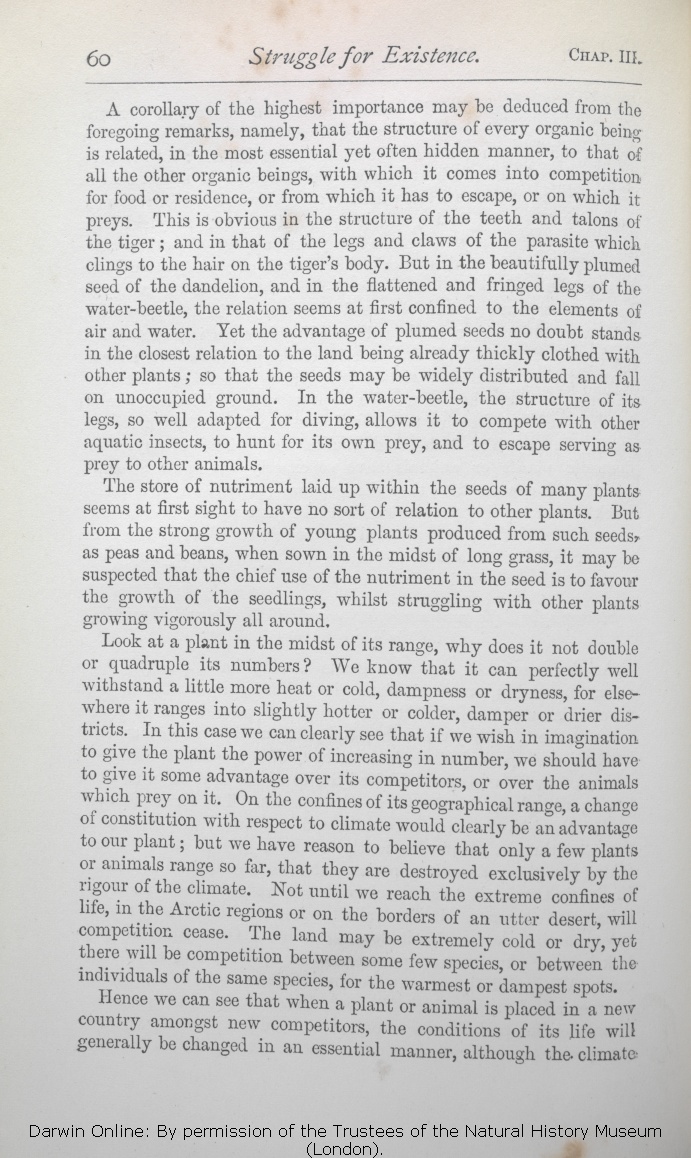A corollary of the highest importance may be deduced from the foregoing remarks, namely, that the structure of every organic being is related, in the most essential yet often hidden manner, to that of all
the other | the other 1869 1872 | | other 1859 1860 1861 1866 |
| tiger's 1859 1861 1866 1872 | | tigers 1860 1869 |
| with 1866 1869 1872 | | by 1859 1860 1861 |
|
|
The store of nutriment laid up within the seeds of many plants seems at first sight to have no sort of relation to other plants. But from the strong growth of young plants produced from such
seeds, | seeds, 1872 | | seeds 1859 1860 1861 1866 1869 |
| as 1872 | | (as 1859 1860 1861 1866 1869 |
| beans, 1872 | | beans), 1859 1860 1861 1866 1869 |
| it may be 1861 1866 1869 1872 |
| I 1859 1860 |
| suspected 1861 1866 1869 1872 | | suspect 1859 1860 |
| ..... 1872 | | young 1859 1860 1861 1866 1869 |
| seedlings, 1872 | | seedling, 1859 1860 1861 1866 1869 |
|
|
Look at a plant in the midst of its range, why does it not double or quadruple its numbers? We know that it can perfectly well withstand a little more heat or cold, dampness or dryness, for elsewhere it ranges into slightly hotter or colder, damper or drier districts. In this case we can clearly see that if we
wish | wish 1872 | | wished 1859 1860 1861 1866 1869 |
| prey 1872 | | preyed 1859 1860 1861 1866 1869 |
| exclusively by 1872 | | by 1859 1860 1861 1866 1869 |
| climate. 1872 | | climate 1859 1860 1861 1866 1869 |
| ..... 1872 | | alone. 1859 1860 1861 1866 1869 |
| Arctic 1860 1861 1866 1869 1872 | | arctic 1859 |
|
|
Hence | Hence 1872 | | Hence, 1859 1860 1861 1866 1869 |
| ..... 1872 | | also, 1859 1860 1861 1866 1869 |
| ..... 1872 | | though 1859 1860 1861 1866 1869 |
| OMIT 1872 |
| climate may be exactly the same as in its former home, yet the 1859 1860 1861 1866 1869 |
|









